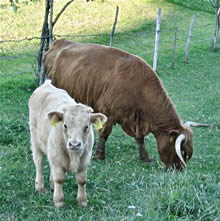The Land-Use Change and Agriculture (LUC) Program provides policy-relevant research and capacity building with an emphasis on global change and sustainable resource use. LUC focuses on agro-ecosystem services such as food, fiber, carbon storage and bioenergy, with special attention to: food security and rural livelihoods; sustainable soil and water resources; impacts of climate change and variability; and mitigation and adaptation strategies. The Program builds on its extensive expertise and will continue to utilize its established close interactions with relevant international organizations, ensuring that deliverables are of high policy relevance. International collaborations with leading climate change research institutions strengthen the Program’s ability to deliver products with high scientific standards.
Sustainable Land Use
Sustainable use and productivity of land and water resources are central issues to global environmental change: in many countries judicious and robust land use strategies will be required for adaptation to climate change. Projected anthropogenic and climate pressures may specifically impact agro-ecosystems through changes in biogeochemical cycles and regional hydrology; reduction of ecological complexity and related loss of biodiversity, thereby increasing the risks to global and regional food and water security. In addition, land management and land-use changes affect emissions and sequestration potential of the major greenhouse gases (CO2, NH4, and N2O). Future decisions concerning land use and adaptation to climate change will also need to consider interactions and synergies with GHG mitigation.
Ecologic-Economic Analysis
There has been a deficit in closing the gap between environmental and economic analyses of land use change, including critical linkages with climate change impacts and GHG effects, due to only modest advances in trans-disciplinary research and integrated spatial modeling. Understanding land-use and land-cover change presents new scientific challenges, particularly for integrating biophysical and socioeconomic data and processes, and for capturing heterogeneity in both components. While spatially explicit modeling undoubtedly increases the burdens associated with data compilation, model estimation and analysis, spatial richness provides an obvious means to relate geographical patterns and social diversity, facilitates interdisciplinary collaboration among diverse disciplines, can offer a mutually beneficial basis for linking case studies and regional analyses, and produces results that are perceived as more useful and relevant for decision-making than aggregate analysis.
Global Change
Independent of long-term global cumulative dimensions, changes in land use and land cover have profound regional environmental implications. It is therefore widely recognized that an understanding of changes in land and water use over a time span of the next 30-50 years is central to the debate of sustainability.
Responsible for this page:
Elisabeth Kawczynski
Last updated:
24 Feb 2011
![]()


 Schlossplatz 1
Schlossplatz 1